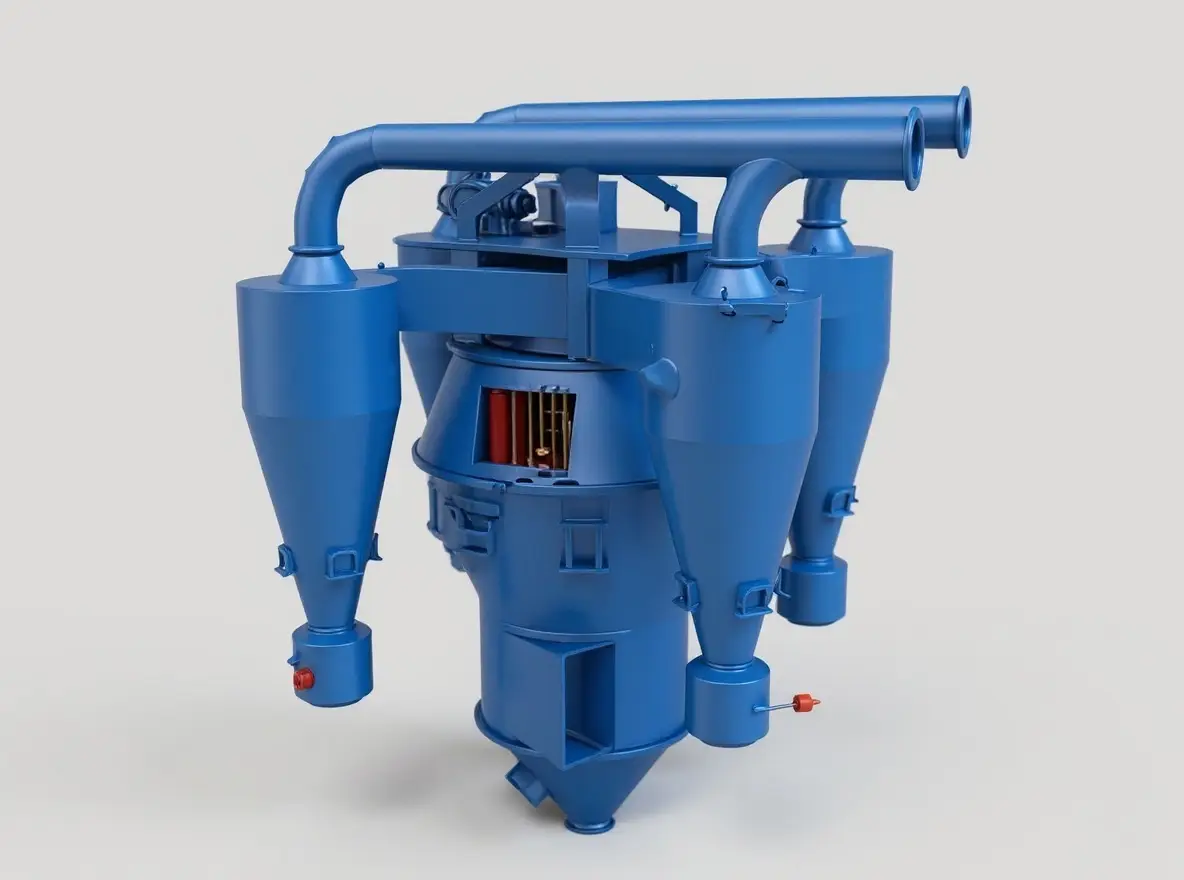Service
Cement Separator
Enhancing Grinding EfficienceThe Cement Separator, also known as the cement mill separator or cement classifier, is integral to cement plants, playing a crucial role in grinding systems. It is widely used in the production of cement, Portland products, new building materials, refractories, and glass ceramics. Typically, it can be classified into three types: separation separator, centrifugal air separator, and cyclone separator.

Cement Separator
Advanced Technology and Efficiency
DMPCR employs cutting-edge foreign powder-selecting technology, integrating the theory of flat eddy current into the cyclone separator. The self-developed Z-type cement separator enhances powder selection efficiency to 85%-90%, offering flexible fineness adjustment with stable and reliable performance.
Highlights
The cement mill separator boasts high efficiency, with powder selection 10% higher than third-generation separators, reaching more than 80%. It increases production and saves energy; compared to an open-circuit cement mill, output rises by 40%-100%. When compared to centrifugal and cyclone-type closed-circuit mills, output can increase by 15%-40%, with grinding system power consumption reduced by 10%-20%.
Quality Improvement
By refining particle distribution, the separator enhances product quality, increasing the content of 3-30µm particles and improving cement strength. It also reduces particles above 200µm, enhancing raw meal flammability. The system allows for a wide range of product fineness, easily controlled by adjusting the separator speed, without halting operations.
Durability and Environmental Considerations
The separator has a long service life, incorporating wear-resistant measures that minimize maintenance costs. Its compact, lightweight, and flexible design supports easy installation. Operating under full negative pressure, it ensures a friendly environment, using cold air for powder gas, contributing to lower cement product temperatures.
Working Principle
Material enters through the feed pipe, dispersing into the rising airflow via the dispersion plate. Medium debris, resisted by gravity, discharges through the slag outlet. The powder-laden airflow ascends to the grading section, entering the rotor for classification. Guide vanes induce flow rotation, pre-grading, and capturing coarse particles, while distributing flow speed evenly along the rotor height. Coarse particles fall through the cone and are discharged; fine particles enter the rotor’s center and proceed to the collection device via the fine powder outlet.
Conclusion
The cement separator enhances grinding efficiency, production, and product quality while reducing energy consumption. With advanced technology and a focus on sustainability, DMPCR’s cement separators are a reliable choice for optimizing cement plant operations.
